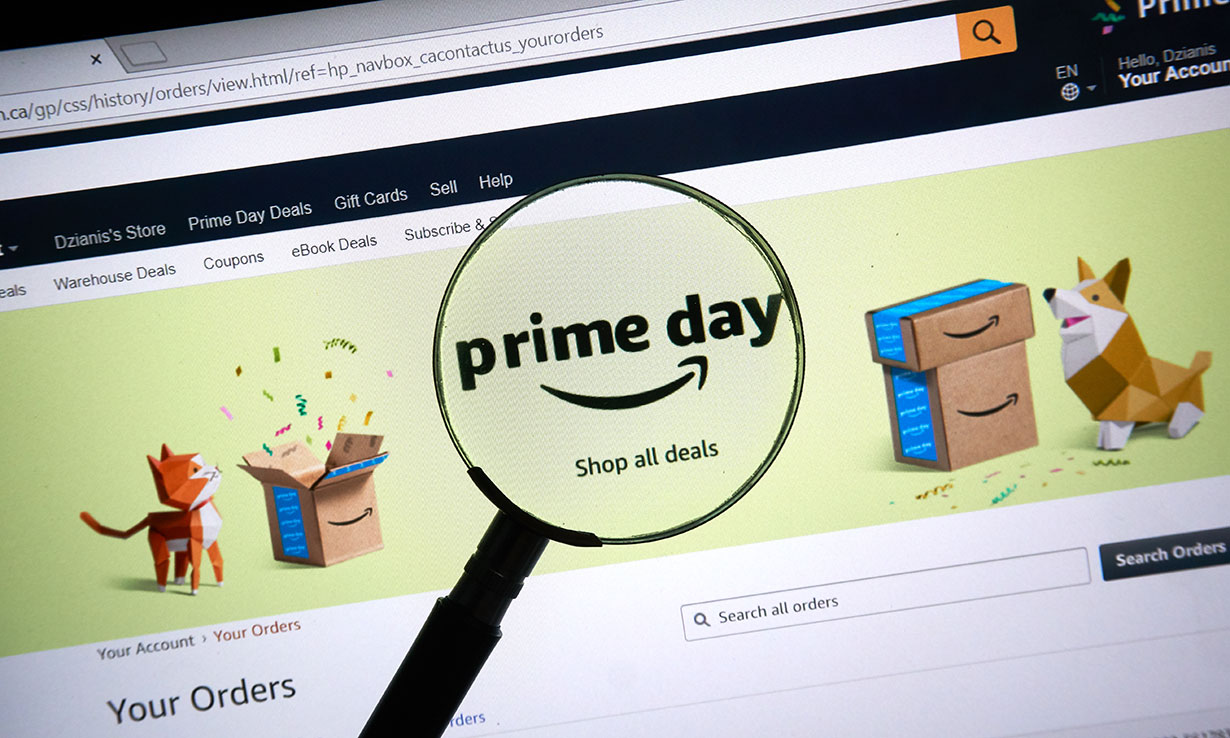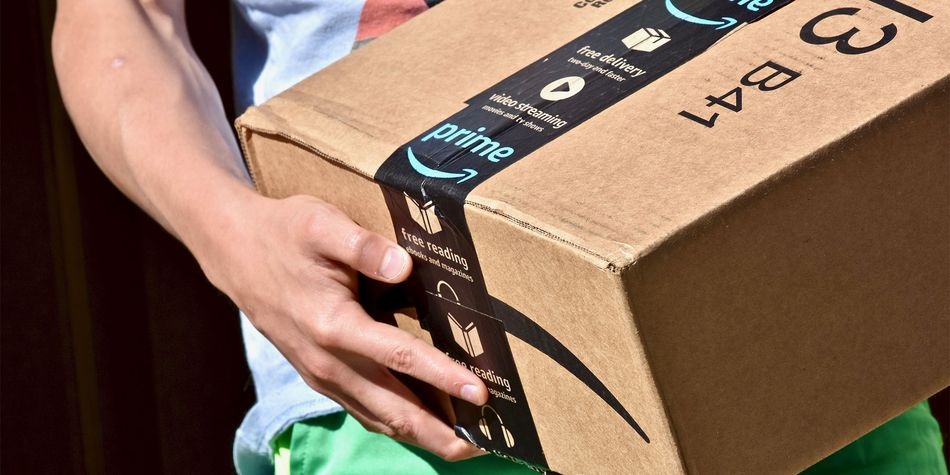By clicking a retailer link you consent to third-party cookies that track your onward journey. This enables W? to receive an affiliate commission if you make a purchase, which supports our mission to be the UK's consumer champion.
Are Amazon Prime Day deals any good?

The Amazon Prime Day sale is back next week - but just how good are the deals?
The sale offers exclusive discounts for Amazon Prime members on hundreds of thousands of products. This time 'Prime Big Deals Days', as it's now called, is back on Tuesday 7 October and Wednesday 8 October.
But are the deals any good, and is it worth holding out to get the best prices? We analysed the pricing history of some of the most high-profile deals to find out.
Should you wait for Amazon Prime Day?
Our exclusive research digs deep into the prices of Amazon Prime Day deals to help you decide whether to shop in the sale this time.
We looked into 34 deals on popular products on the Amazon UK website during the last Amazon Prime Day sale in July, analysing the prices of products in the months leading up to the sale.
Overall, we found most of the deals to be pretty good.
An impressive 85% of the deals were the cheapest price they had been in the previous six months, with only 9% (three products) that were cheaper than the Amazon Prime deal price in the six months prior.
When looking at a longer period, 56% (or 19 products) had been cheaper in the previous 12 months.
- Find out more: Best Amazon Prime Day deals 2025 - bookmark this page for help from our experts to pinpoint the very best deals on the day
How much are the savings?
Our snapshot investigation shows the prices of Amazon Prime Day deals to be pretty good. But that's not the full story.
We also looked at the claimed reference prices stated on these deals to see how relevant or genuine they appeared to be.
Many Amazon Prime Day deals had two reference prices - a Recommended Retailer Price (RRP) as well as a non-member price. It is unusual to have two reference prices, and it isn't clear which one is closer to the price that Amazon normally charges, which could be confusing for shoppers.
We took both these higher reference prices and calculated how many days they had been charged as the actual selling price in the 12 months leading up to the sale.
RRPs under scrutiny
We found 35% of the products in our investigation had never been sold at the RRP (or greater) on the Amazon UK website in the six months prior. And of those that had, the RRP price had only been in place on average for a third of the time.
Examples we found included:
- A four-pack of Apple AirTags was in the Amazon Prime sale at £84, with an RRP of £119 and a non-member price of £92. But it had never been sold at that RRP in the previous 12 months. The highest it had been was £94.
- The Dyson V8™ Advanced cordless stick vacuum cleaner (Silver/Nickel) was advertised at £229.99 in the Amazon Prime sale. It had an RRP of £329.99 but had never been that price in the two months Amazon had stocked it prior to the Prime sale (although it had been close at £329 on two days). Its average price was £267.88 - far less than the RRP.
- The Toshiba 65UV2F53DBU 4K Smart VIDAA TV was in the Amazon Prime sale at £329 with an RRP of £429 and a non-member price of £379. But the highest price it had been in the six months that Amazon had stocked it prior to the sale was £379, and its average price was actually £366 - less than both the RRP and the non-member price.
- The Ninja Foodi Dual Zone Digital Air Fryer was in the Amazon sale for £124.99, with an RRP of £218.99 and a non-member price of £159.20. But it had only been a maximum price of £186.99 in the 12 months prior, and its average price was less than both the RRP and non-member price at £152.38.
This leads us to believe the RRP may not be the best indicator of savings shoppers are making in the Amazon Prime sale, at least in relation to their previous selling prices on Amazon.
What about the non-member price?
The non-member price was a better indicator of the savings than the RRP. The vast majority - 97% - of the products in our investigation had been sold at the non-member price (or greater) at least once in the six months before the deal.
Although, on average, products were sold at, or above, the non-member price just 47% of the time - meaning that most of the time the saving would have been less.
We also found some examples where products were cheaper than the non-member price in the months leading up to the sale. For example:
- A multipack of WaterWipes Original Baby Wipes was £29.99 in the Amazon Prime sale, with an RRP of £39.99 and a non-member price of £35.10. But they were £25.80 for five days in March.
- The Amazon Fire TV Cube (Newest gen) was in the Prime sale for £109.99, with an RRP of £139.99 and a non-member price of £139.99. But the average price across the 12 months prior was £132.70.
- The Ring Spotlight Cam Plus Battery was £79.99 in the Amazon Prime sale, with an RRP and non-member price of £129.99. But the average price was £127.14 across the 12 months before.
We tracked prices during the 12 months before 8 July 2025, using an independent pricing provider.
- Find out more: how to get the best price when shopping online
Is Amazon Prime worth signing up for?
Amazon Prime costs £8.99 a month, or £95 for a year, which will save you £12.88 over 12 months, in comparison to the monthly payment option. Students and anyone aged between 18 and 22 are eligible for a Prime Student membership at £4.49 per month.
If you time it well, you can sign up for 30 days of Amazon Prime for free once the Prime Day sales begin, and then cancel for free before you get charged. If you don't cancel within the 30 days, you'll automatically be switched onto a regular Amazon Prime membership and charged £8.99 a month.
It includes various delivery options, Prime Video, photo storage, music and podcasts - as well as exclusive deals.
Although our research found that Amazon Prime Day deals seem to offer a good price, we think shoppers should take care when looking at the reference prices that Amazon uses to show the savings they might be getting.
You can also check a product's pricing history yourself, using CamelCamelCamel for Amazon and Price Runner for wider market coverage.
As always, our advice for any sale is to look at the price you are paying and not the supposed savings you are making.
What does Amazon say?
We put our findings to Amazon.
A spokesperson said: 'We offer our customers great value all year round through everyday price-matching, ensuring our prices are as low or lower than other retailers on products sold by Amazon, as well as through fantastic deal events like Prime Day.
'While Which? analysed just 34 Prime Day deals, this year’s event offered hundreds of thousands of deals exclusively to Prime members in the UK.
'To help customers compare prices and find the best deals, we provide a price comparison with a reference price, such as the recommended retail price (RRP).
'Additionally, independent analysts Profitero reviewed over 9,000 products in 2024 and found that Amazon’s year-round prices are 15% lower on average than other online retailers in the UK.'



